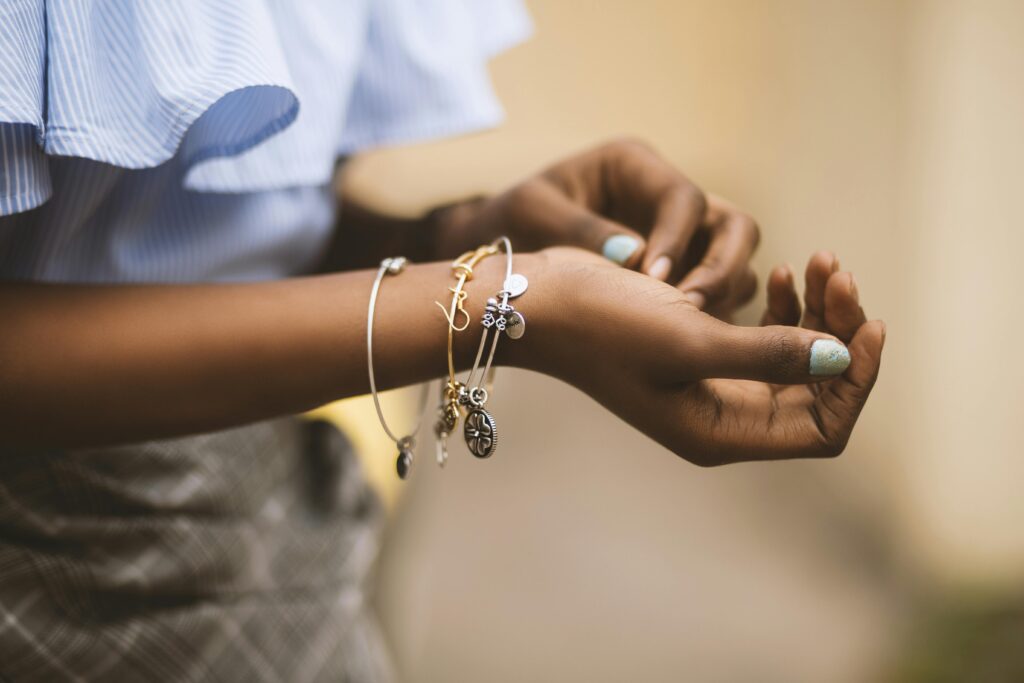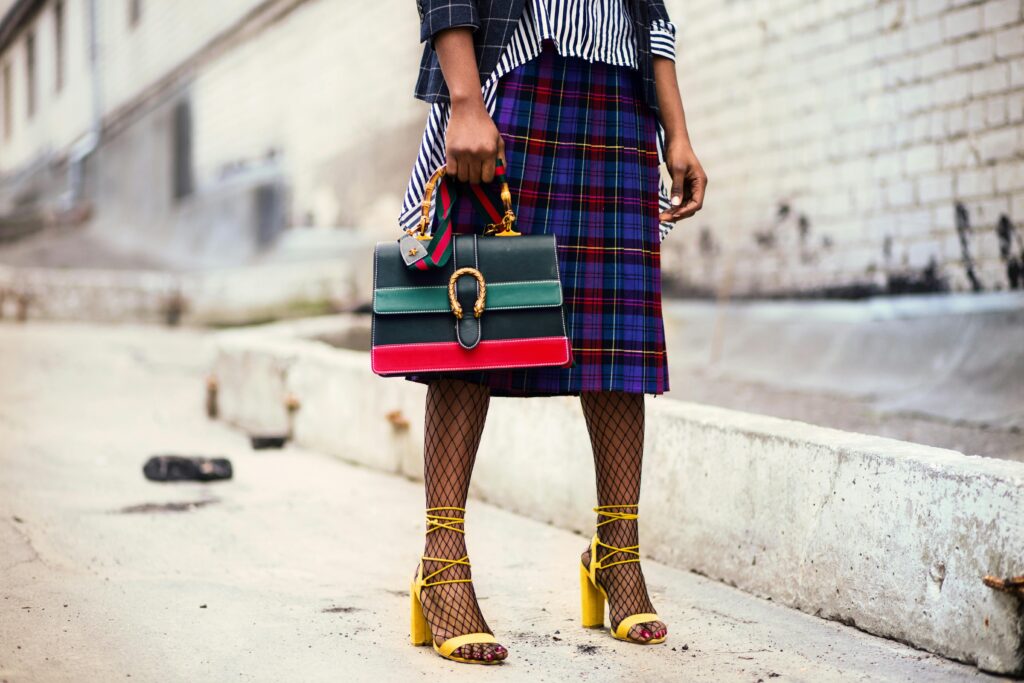What is sustainable jewelry?
Sustainable jewelry refers to pieces designed, sourced, manufactured and sold with careful attention to environmental impact, social responsibility, and long-term value. It covers a range of practices: using recycled metals, lab-grown stones, ethically sourced gemstones and metals, low-impact production processes, fair labour, transparent supply chains, minimal or recyclable packaging, and business models that prioritise longevity over fast trends.
In short, sustainable jewelry tries to reduce harm while keeping craft, beauty and cultural value intact.
Why sustainable jewelry matters
Jewelry seems small — yet the industry touches mining, heavy manufacturing, global shipping and local artisan communities. Conventional practices can cause real harm:
- Environmental damage: Mining for gold, silver and gems often leads to habitat destruction, soil erosion, water pollution and heavy CO₂ emissions.
- Human costs: Poor working conditions, child labour and unfair pay have been reported in parts of the global supply chain.
- Waste & carbon: Fast-fashion jewellery and throwaway trends create plastic and metal waste and increase resource extraction.
Choosing sustainable jewelry reduces these impacts by closing material loops, supporting responsible miners and makers, and encouraging products built to last.
Eco-friendly materials & alternatives
When evaluating sustainable jewelry, materials are the most visible factor. Below are common options and why they matter.
Recycled metals
Gold, silver, copper and platinum can be recycled from old electronics, scrap jewelry or industrial waste. Recycled metals reduce the need for new mining and typically have a lower carbon footprint. Look for recycled 14k/18k gold or sterling silver labelled as recycled.
Lab-grown gemstones
Lab-grown diamonds and sapphires are chemically and optically the same as mined stones but created in controlled environments. They avoid mining impacts and often cost less. For many buyers, lab-grown diamonds are a high-impact sustainable choice.
Ethically sourced gemstones
Some gems still need mining. Ethical sourcing focuses on traceability, fair wages, safe working conditions, and environmental rehabilitation. Certified sources and artisan supply chains help ensure responsible practices.
Alternative materials
- Wood, bamboo, horn & seeds: Renewable or low-impact for casual pieces.
- Upcycled materials: Vintage buttons, broken watch parts, reclaimed glass or sea glass.
- Plant-based resins: Emerging options for colourful, low-toxicity jewelry.
Low-impact plating & coatings
Plating can extend the life of a less expensive base metal, but avoid heavy nickel plating (allergy risk) and check for RHL-compliant finishing. Ask makers about the chemicals used and whether coatings are non-toxic.
Certifications & labels to trust
Certification can help you separate genuine sustainability claims from marketing. Key schemes to look for include:
- Fairtrade Gold: Ensures miners receive fair pay and social benefits and that environmental standards are met at artisan mining sites.
- RJC (Responsible Jewellery Council): Covers ethical, human rights and environmental standards across the supply chain.
- FSC (for wooden elements): Ensures wood comes from responsibly managed forests.
- Lab-grown stones labelling: Look for transparent origin claims and independent testing.
- Recycled content claims: Verified recycled metal percentages (e.g., Recycled 14k gold 75%+) are useful — ask for proof or a certificate.
Certifications are helpful but not perfect — also look for brands that publish traceability data, worker stories, and environmental impact reports.
How to shop sustainably for jewelry
Shopping sustainably means asking the right questions and prioritising longevity and transparency.
1. Ask about materials & origin
Where does the gold come from? Is the gem lab-grown or mined? Has the metal been recycled? A transparent seller will answer these questions without handwaving.
2. Prioritise repairability & timeless design
Choose classic pieces you’ll wear for years. Steer away from ultra-cheap trends that are discarded quickly. Find makers who offer repair, resizing, and refurbishment.
3. Look for transparent pricing
Sustainable brands often break down their pricing: material costs, labour, overheads. This transparency helps you judge fairness and value.
4. Consider secondhand & vintage
Buying pre-owned jewelry is one of the most sustainable choices: no new materials, lower cost, and unique style. Check trusted vintage dealers and estate sales.
5. Check packaging & shipping
Eco-friendly packaging (recycled boxes, compostable padding) and carbon-neutral shipping are positive signs. Avoid unnecessary plastic and single-use jewelry boxes when possible.
6. Support local makers
Local artisans reduce shipping emissions and often maintain closer control over materials and labour practices. Visit craft markets or local studios where you can ask questions in person.
Care & longevity: extend the life of your sustainable jewelry
Keeping jewelry in use is the single biggest sustainability win. Here are practical tips to make pieces last decades:
- Storage: Store pieces separately to avoid scratches; use soft pouches or fabric-lined boxes.
- Cleaning: Use gentle, non-toxic cleaners. Warm water, mild soap and a soft brush work for most metals and stones. Avoid harsh chemicals on plated pieces.
- Regular maintenance: Tighten loose settings, re-plate when necessary, and have professional checks for prongs and mounts.
- Avoid harsh conditions: Remove jewelry for heavy work, swimming in chlorinated pools, or while using household chemicals.
- Insure valuable pieces: For meaningful or expensive items, insurance protects long-term investment and reduces likelihood of replacement purchases.
DIY & upcycling jewelry ideas
If you enjoy crafting, upcycling is a great way to make unique, low-impact pieces. Simple ideas to get started:
- Convert vintage chains: Turn broken necklaces into new layered chains or bracelets.
- Use reclaimed metals: Melt down old non-precious metal pieces for costume jewelry (take safety precautions).
- Sea glass & found objects: Make pendants from sea glass, pressed flowers in resin, or tiny heirloom bits from family keepsakes.
- Bead repurposing: Reuse beads from outdated jewelry into modern earrings or anklets.
Document your process and list materials when selling — buyers appreciate transparency and a story behind the piece.
How brands can be more sustainable
Sustainability isn’t only about materials — brands set the tone. Positive brand practices include:
- Full supply chain transparency: Publish origin of metals and gems, partner information and impact data.
- Fair wages & artisan support: Pay living wages, support training, and invest in community development.
- Repair & take-back programs: Offer repair services and accept old pieces for recycling.
- Minimal & recyclable packaging: Use recycled boxes, paper tape, and seed-paper tags.
- Local production where possible: Reduce shipping emissions and support local economies.
- Climate action: Measure and reduce emissions; offset responsibly where needed.
Starting a sustainable jewelry small business
If you’re thinking of creating a sustainable jewelry brand, these practical steps will help you build credibility and reduce impact:
- Choose sustainable materials: Start with recycled metals, certified gems or lab-grown stones.
- Build transparent sourcing: Partner with certified suppliers and keep traceability records.
- Design for repair: Make pieces modular and easy to service rather than disposable.
- Use low-impact finishing: Select non-toxic finishes and safe workshop practices.
- Be honest in marketing: Avoid greenwashing. Show your processes, admit limits, and publish improvement plans.
- Offer trade-ins & refurbishing: Encourage customers to return old items for recycling or redesign.
Starting small with a clear sustainability promise and scaling responsibly builds loyal customers and long-term value.
Cost & value: sustainable vs conventional jewelry
Many buyers assume sustainable jewelry is more expensive — often true up front, but the full picture is nuanced.
- Higher upfront price: Ethical raw materials and fair labour can increase cost compared with cheap mass-market jewelry.
- Better long-term value: Durable, timeless pieces require fewer replacements and often hold resale value.
- Secondhand savings: Vintage and pre-owned sustainable pieces offer affordability without new extraction.
- Cost-effective choices: Lab-grown stones or recycled metals can be more affordable than newly-mined equivalents.
Think in terms of cost per wear and environmental cost, not only sticker price.
FAQs
What does the term sustainable jewelry mean?
It means jewelry made with attention to environmental and social impact — using recycled or responsibly sourced materials, fair labour, low-impact manufacturing, and long-lasting design.
Are lab-grown diamonds sustainable?
Lab-grown diamonds avoid the environmental and social costs of mining and are generally considered a more sustainable option. However, check the energy sources used in the labs — green energy improves sustainability further.
Is recycled gold really better?
Yes. Recycled gold reduces the need for new mining, cutting habitat destruction and carbon emissions. The process requires energy, so ask sellers about recycling methods and certifications.
How can I verify a brand’s claims?
Ask for proof: certificates, supply chain mapping, worker stories, and third-party audits. Transparent brands are happy to show their evidence.
Can sustainable jewelry be affordable?
Absolutely. Secondhand pieces, smaller carat sizes, lab-grown stones, and recycled metals offer affordable entry points into sustainable jewelry.
Conclusion & next steps
Choosing sustainable jewelry is a powerful way to align personal style with environmental and social responsibility. Start small: buy one certified recycled piece, explore lab-grown stones, or repair and repurpose what you already own. Support makers who are transparent, pay fair wages, and design for longevity. Over time, your choices help shift the industry toward less wasteful, more humane practices.
Here are three quick actions to get started today:
- Check one piece you already own — can it be repaired, resized, or refreshed instead of replaced?
- Find a local maker or vintage dealer and ask about material origin and repair services.
- Choose recycled metal or a lab-grown stone for your next meaningful purchase.



